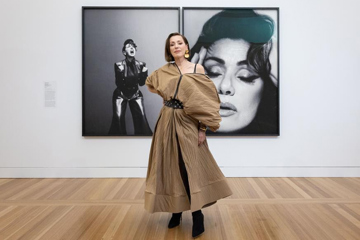Live Review: HTRK, Otologic
HTRK made Melbourne reluctant to return to the real world.

Otologic set the perfect mood in National Gallery Of Victoria’s Great Hall as the punters begin to flood in.
The Melbourne duo run through a tasteful set of esoteric, ambient tunes to get the crowd prepared for the down-tempo headliners. This is a perfect, calm space in which to take in these vibes and the expectant audience start to get up from their seats to gather loosely around the stage.
When HTRK come on they almost don’t allow the crowd to show their enthusiasm; neither singer Jonnine Standish nor guitarist Nigel Yang smile or say anything before launching into Blue Sunshine from their most recent album. It’s clear from the start that they really enjoy creating a dark, thoughtful atmosphere and that they do it really well. Yang gives a knowing smile as he moves from synth to guitar, playing with the dozen or so pedals he has to create reverberating loops of deep bass and electronic percussive sounds.
The set has very few ups and downs, but that’s not to say that it’s not engaging. Rather, the crowd is totally locked in, swaying to each beat. And Standish floats above all this. With an almost scared expression on her face as the haunting opening chords of Chinatown Style hypnotise the crowd, Standish sings, “You know/I’ve got/Mood swings,” with her flawless coo and one cannot help but think that she’s the coolest person in the world. Assisting this last point is the way both band members dress: effortlessly stylish. Yang wears detailed shorts and an open, short-sleeve shirt over singlet and has parallel lines shaved into the sides of his head, while Standish sports an elegant black ensemble with white socks. They both carry themselves with the graceful confidence of humble rockstars from beginning to end. The effect this has is that it makes the audience trust wherever the band goes musically even through the essentially repetitive The Body You Deserve. This song also succeeds in building up a dark world: a descending bassline below industrial whirs and Vangelis-y synths. It paints a bleak image but, like all ambient music, it takes the audience to an ethereal place, somewhere very interesting to stay until the last song ends. The duo exits and we reluctantly return to the real world.







